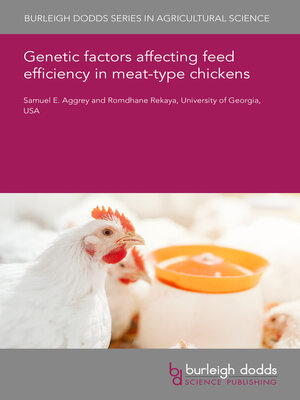Genetic factors affecting feed efficiency in meat-type chickens
ebook ∣ Burleigh Dodds Series in Agricultural Science
By Professor Sammy Aggrey

Sign up to save your library
With an OverDrive account, you can save your favorite libraries for at-a-glance information about availability. Find out more about OverDrive accounts.
Find this title in Libby, the library reading app by OverDrive.



Search for a digital library with this title
Title found at these libraries:
| Library Name | Distance |
|---|---|
| Loading... |
To meet the global demand poultry meat, poultry should be produced efficiently and sustainably. Feed constitutes 70% of the cost of poultry production, meaning improvements in feed efficiency would be beneficial to producers, consumers and the environment. Feed conversion ratio (FCR) is an economic trait preferred by producers because it is directly related to profitability. Different combinations of feed intake and body weight gain can provide the same FCR value and may have the same economic outcome but with different underlying biological causes. Residual feed intake (RFI) breaks down feed efficiency into efficiencies of feed intake for maintenance and growth, respectively. Feed efficiency is affected by ambient factors, animal factors and output factors and is an aggregate of several complex traits with several interacting components. Identification of a major driver, e.g. reduction in maintenance requirement, efficiency of digestion, efficiency of protein retention and efficiency of growth can significantly improve the trait.







